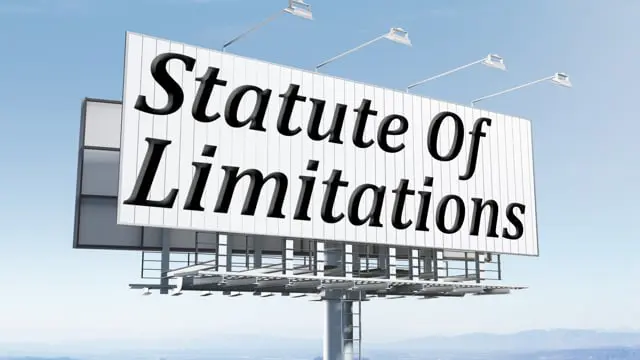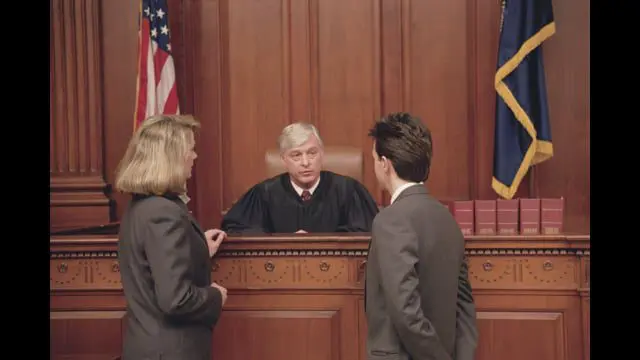El paisaje de student loan laws is undergoing significant transformations as policymakers grapple with the mounting student debt crisis in the United States. These changes aim to provide relief to millions of borrowers burdened by educational debt while also addressing systemic issues within the student loan system. As we approach 2025, the legal framework surrounding student loans is poised for substantial modifications, with potential impacts on repayment options, loan forgiveness programs, and the overall structure of higher education financing.
One of the most notable developments in recent years has been the introduction of the Saving on a Valuable Education (SAVE) plan, which represents a significant overhaul of income-driven repayment options. The SAVE plan, designed to make repayment more manageable for borrowers, calculates monthly payments based on a smaller percentage of discretionary income compared to previous plans. Additionally, it offers more generous terms for interest accrual and potential loan forgiveness. However, the implementation of SAVE has faced legal challenges, creating uncertainty for millions of borrowers who have enrolled or are considering this repayment option.
The legal battles surrounding SAVE highlight the complex interplay between executive actions, legislative intent, and judicial interpretation in shaping student loan policy. As courts deliberate on the legality of SAVE, borrowers find themselves in a state of limbo, unsure of whether their current repayment strategies will lead to the promised loan forgiveness. This uncertainty underscores the need for clear, legislatively-backed solutions to the student debt crisis that can withstand legal scrutiny.
Another significant area of change in student loan laws concerns the Public Service Loan Forgiveness (PSLF) program. Originally designed to encourage graduates to pursue careers in public service, PSLF has been plagued by administrative issues and low approval rates. Recent reforms have aimed to streamline the PSLF process and expand eligibility, potentially benefiting millions of public service workers. However, the future of PSLF remains uncertain, with some proposals calling for its elimination or substantial modification.
The ongoing debate over broad student loan forgiveness has also shaped the legal landscape. While attempts at large-scale debt cancellation through executive action have faced legal challenges, the conversation has shifted towards more targeted approaches to debt relief. Proposed rules by the Department of Education seek to authorize loan forgiveness for borrowers experiencing various hardships, including high medical costs and childcare expenses. These proposals represent a shift towards a more nuanced approach to debt relief, focusing on borrowers who face the most significant financial challenges.
As lawmakers and policymakers continue to grapple with the student debt crisis, several key areas of focus have emerged. One such area is the reform of interest capitalization practices, which can cause loan balances to balloon over time. Proposed changes aim to limit or eliminate interest capitalization in certain circumstances, potentially providing significant relief to borrowers struggling with growing balances.
Another area of focus is the improvement of loan servicing practices. Recent legislative proposals have sought to enhance borrower protections, increase transparency in loan servicing, and hold servicers accountable for errors or misconduct. These changes aim to address longstanding issues in the student loan system, including misapplied payments, incorrect information provided to borrowers, and difficulties in accessing repayment options.
El papel de private student loans in the overall debt crisis has also come under scrutiny. While federal loans offer various protections and repayment options, private loans often lack these safeguards. Some lawmakers have proposed extending certain federal protections to private loan borrowers or creating mechanisms for refinancing private loans into federal loans. These proposals aim to provide relief to borrowers who may be struggling with less flexible private loan terms.
As the legal landscape of student loans continues to evolve, the concept of income share agreements (ISAs) has gained attention as an alternative to traditional student loans. ISAs, where students agree to pay a percentage of their future income in exchange for education funding, present novel legal challenges. Policymakers are grappling with how to regulate these agreements, balancing the potential benefits of increased access to education with concerns about consumer protection and equity.
The intersection of student loan law and bankruptcy law remains a contentious issue. Currently, student loans are notoriously difficult to discharge in bankruptcy, with borrowers required to demonstrate “undue hardship” – a standard that has been interpreted very narrowly by courts. There are ongoing efforts to reform bankruptcy laws to make it easier for borrowers facing severe financial distress to discharge their student loans, potentially providing a lifeline to those in the most dire circumstances.
En Higher Education Act (HEA), the primary federal law governing student financial aid, is due for reauthorization. This process provides an opportunity for comprehensive reform of the student loan system. Proposals for HEA reauthorization have included measures to simplify the financial aid application process, increase grant funding to reduce reliance on loans, and create more robust accountability measures for institutions of higher education.
As policymakers consider changes to student loan laws, there is growing recognition of the need to address the root causes of the debt crisis. This includes examining the rising costs of higher education and the role of federal and state funding in supporting public institutions. Some proposals call for increased investment in public colleges and universities to reduce the need for borrowing, while others focus on enhancing financial literacy education to help students make informed decisions about education financing.
El concepto de loan rehabilitation is also undergoing changes. For borrowers who have defaulted on their federal student loans, loan rehabilitation offers a path to bring their loans back into good standing. Recent proposals aim to make this process more accessible and effective, potentially including provisions for automatic rehabilitation based on a borrower’s income and financial circumstances.
En prescripción on student loan debt collection is another area of legal debate. Unlike many other forms of debt, federal student loans currently have no statute of limitations on collection efforts. Some advocates argue for the implementation of a statute of limitations to provide borrowers with a fresh start after a certain period, while others contend that this could incentivize default.
El papel de state governments in addressing the student debt crisis is also evolving. Several states have implemented their own student loan borrower bills of rights, established state-level ombudsman offices to assist borrowers, and even explored state-funded loan forgiveness programs. These state-level initiatives complement federal efforts and may serve as laboratories for innovative approaches to student debt relief.
The intersection of student loan law and consumer protection law is becoming increasingly important. As the complexity of student loan products and repayment options grows, there is a heightened focus on ensuring that borrowers are provided with clear, accurate information and are protected from predatory practices. This includes efforts to enhance disclosure requirements, strengthen regulations on student loan servicers, and improve mechanisms for borrowers to seek redress for misconduct.
El concepto de institutional accountability is gaining traction in discussions of student loan reform. Proposals include measures to hold colleges and universities financially responsible for high default rates among their graduates or to tie an institution’s eligibility for federal student aid to certain performance metrics. These accountability measures aim to incentivize schools to prioritize student outcomes and reduce the risk of students taking on unmanageable debt.
As technology continues to reshape the landscape of higher education, online education and its implications for student loan law are coming under scrutiny. Questions about how to appropriately fund and regulate online programs, particularly in light of their potential to either exacerbate or alleviate the student debt crisis, are at the forefront of policy discussions.
En tax treatment of forgiven student loan debt remains a significant issue. Currently, most forms of forgiven or canceled student debt are treated as taxable income, potentially creating a significant tax burden for borrowers who receive loan forgiveness. There are ongoing efforts to change this tax treatment, with some proposals calling for blanket exclusion of forgiven student debt from taxable income.
El concepto de targeted loan forgiveness for specific professions or geographic areas is gaining attention as a potential tool to address workforce shortages and promote economic development in underserved areas. These programs, which may forgive a portion of student debt in exchange for work commitments, raise complex legal questions about implementation, funding, and equity.
En international dimension of student loan law is becoming increasingly relevant as more U.S. students pursue education abroad and international students seek education in the U.S. This includes considerations of how to handle cross-border debt collection, the recognition of foreign degrees for loan eligibility purposes, and the development of international standards for student loan practices.
As the legal landscape of student loans continues to evolve, the role of financial technology (fintech) in student lending and repayment is coming under increased scrutiny. Innovations in this space, such as AI-driven repayment assistance tools and blockchain-based loan tracking systems, present both opportunities and challenges from a regulatory perspective.
The intersection of student loan law and disability rights is another area of focus. While there are existing provisions for loan discharge in cases of total and permanent disability, advocates argue for expanded protections and streamlined processes for borrowers with disabilities. This includes considerations of how to handle partial disabilities and temporary incapacities that may affect a borrower’s ability to repay.
El concepto de loan consolidation is also undergoing changes in light of the evolving student loan landscape. As new repayment plans and forgiveness options become available, the implications of consolidation for borrower eligibility and long-term repayment strategies are being reassessed. This may lead to new regulations governing the consolidation process and its impact on borrower rights and obligations.
El papel de credit reporting in the student loan system is another area of potential legal reform. Proposals include changes to how student loan information is reported to credit bureaus, potentially including more nuanced reporting that takes into account participation in income-driven repayment plans or temporary hardship deferments.
As the student debt crisis continues to impact millions of Americans, the legal framework surrounding student loans is likely to undergo further changes in the coming years. These changes will need to balance the interests of borrowers, taxpayers, educational institutions, and the broader economy. The evolving landscape of student loan laws reflects a growing recognition of the complex challenges posed by the current system and the need for innovative, comprehensive solutions to address the student debt crisis.
Fuentes:
- https://www.newsweek.com/student-loan-repayments-what-expect-2025-2002079
- https://www.investopedia.com/what-will-the-new-year-bring-for-student-loan-borrowers-8765288
- https://www.congress.gov/bill/117th-congress/house-bill/4797
- https://www.nea.org/nea-today/all-news-articles/project-2025-and-higher-education
- https://vinfoundation.org/the-election-is-over-change-is-on-the-horizon-what-is-next-for-your-student-loans/
- https://www.brookings.edu/articles/how-are-legal-challenges-to-save-affecting-the-student-loan-program/
- https://www.ed.gov/about/news/press-release/biden-harris-administration-releases-proposed-rules-authorize-debt-relief
- https://www.forbes.com/sites/adamminsky/2024/11/20/7-things-student-loan-borrowers-should-do-before-2025-as-loan-forgiveness-changes-loom/
- https://www.newsweek.com/student-loan-update-borrowers-face-new-consequences-2008179








